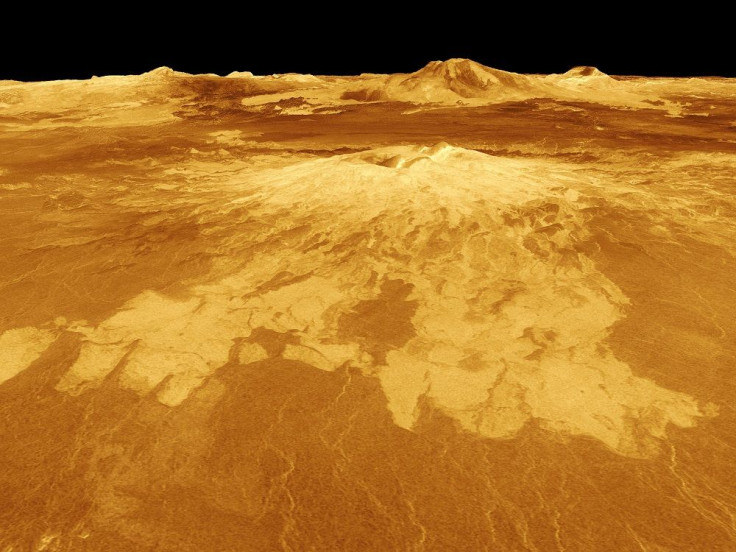37 Volcanoes On Venus Still Active, Study Finds
KEY POINTS
- The researchers of a new study found evidence of active volcanic structures on Venus
- The find suggests that Venus is still a geologically active planet
- Most of the active mantle plumes are in an area the researchers call the 'Ring of Fire'
Researchers of a new study found evidence that Venus might still be a geologically active planet. They found that 37 structures on the planet's surface were not formed by ancient volcanic activity but, of more recent ones.
The surface of Venus has long been determined by scientists to be younger compared to that of other planets in the solar system. Years ago, images from NASA's Magellan mission showed some strange circular structures on the surface of the planet and, many researchers assumed they were formed by mantle plumes from within the planet, much like how similar structures formed the Hawaiian Islands.
It was believed that these ancient structures formed due to ancient volcanic activity. With the structures already hardened, even warm material from beneath the surface would no longer affect or cause changes on the surface. However, the researchers of a new study published in the journal Nature Geoscience found they may actually be a result of more recent volcanic activity.
For the study, the researchers created 3D simulations of the structures, called "coronae," using numerical models of the thermo-mechanic activity beneath Venus' surface.
"Every corona structure has a specific signature that indicates what is going on beneath it," study co-author Anna Gülcher of the Institute of Geophysics at ETH Zurich said in a news release.

Through these simulations, they found differences in the structures' characteristics, such as in thickness and strength. The researchers were then able to classify over a hundred coronae into two groups: the ones above inactive plumes and the ones above active plumes that are still rising.
"Different corona structures may represent not only different styles of plume – lithosphere interactions but also different stages in evolution," the researchers wrote. "A morphological analysis of large existing coronae leads to the conclusion that at least 37 large coronae (including the largest Artemis corona) are active, providing evidence for widespread ongoing plume activity on Venus."
The researchers found evidence that 37 of the coronae were very recently active. Another interesting find was that most of the active mantle plumes were actually in a band in the Southern Hemisphere of the planet, with only a few of them being outside of it. The researchers call it the "Ring of Fire" in Venus, representing the areas on the planet that may still be active, much like the Earth's own "Ring of Fire" in the Pacific Ocean.
"This is the first time we are able to point to specific structures and say 'Look, this is not an ancient volcano but one that is active today, dormant perhaps, but not dead,'" study co-author Laurent Montési of the University of Maryland said in a statement. "This study significantly changes the view of Venus from a mostly inactive planet to one whose interior is still churning and can feed many active volcanoes."
Earlier in the year, another team of researchers has also found evidence of active volcanoes on Venus. Through an experiment, the team concluded that the lava flows observed in Venus are just a few years old, suggesting that the planet is currently volcanically active.
© Copyright IBTimes 2024. All rights reserved.






















